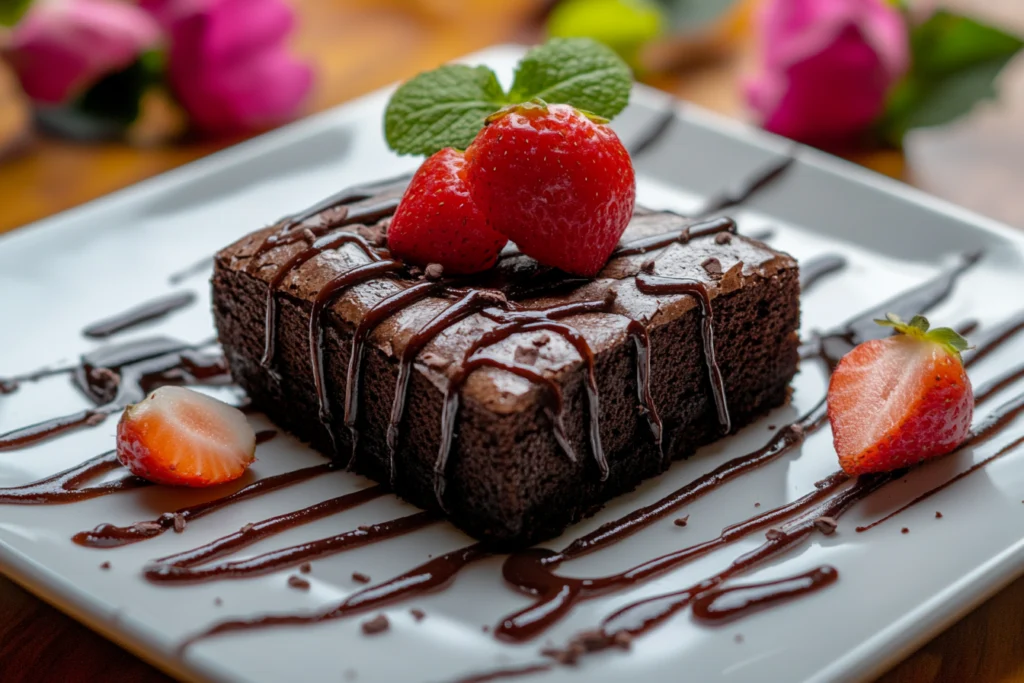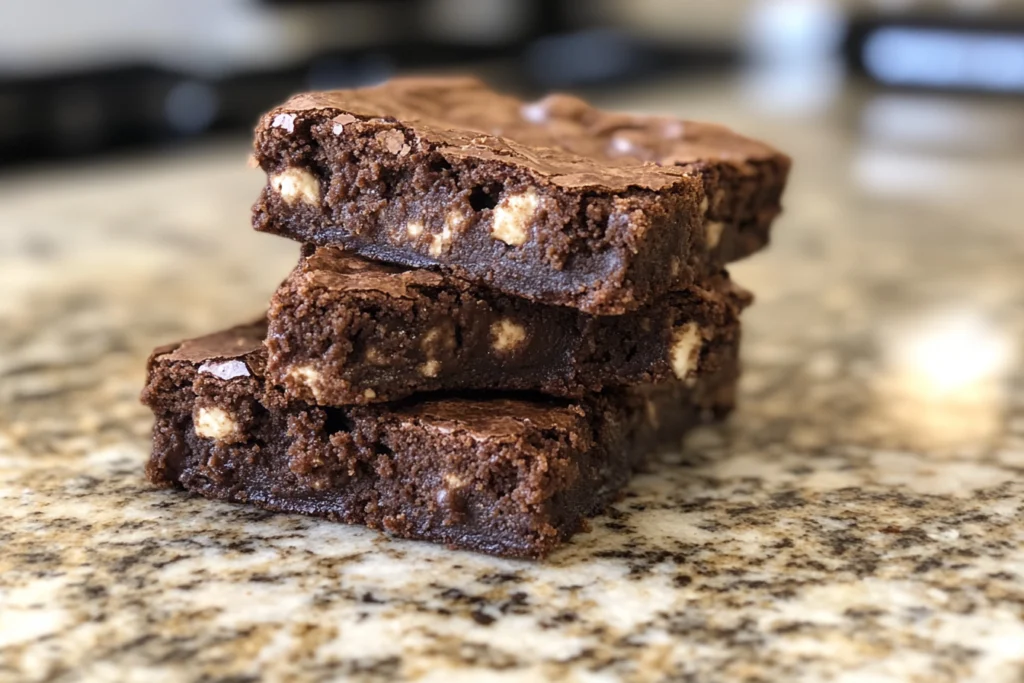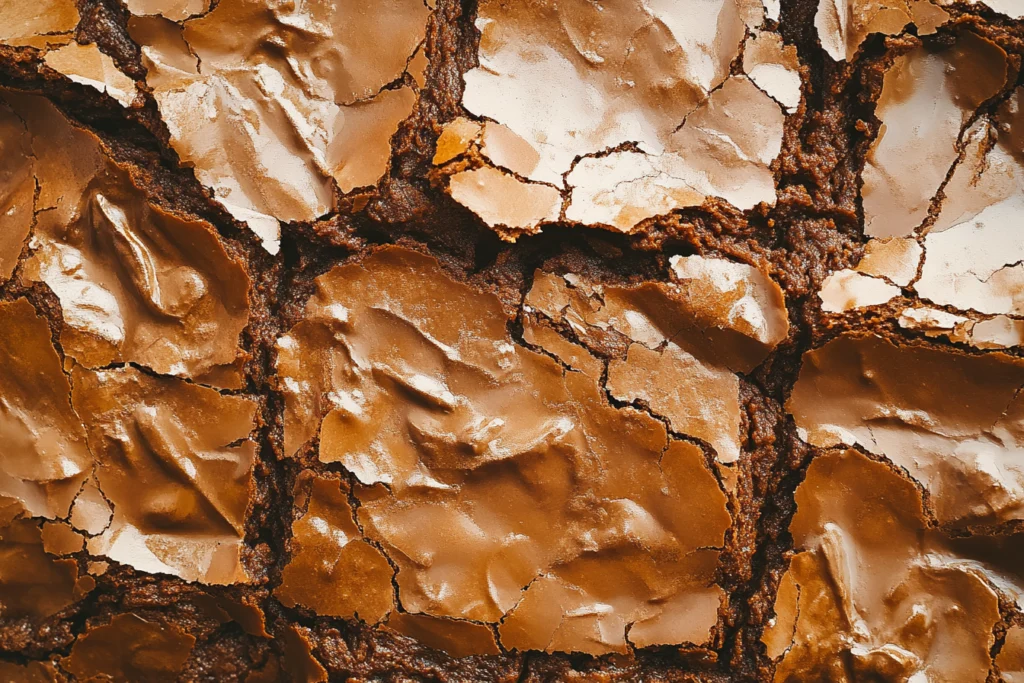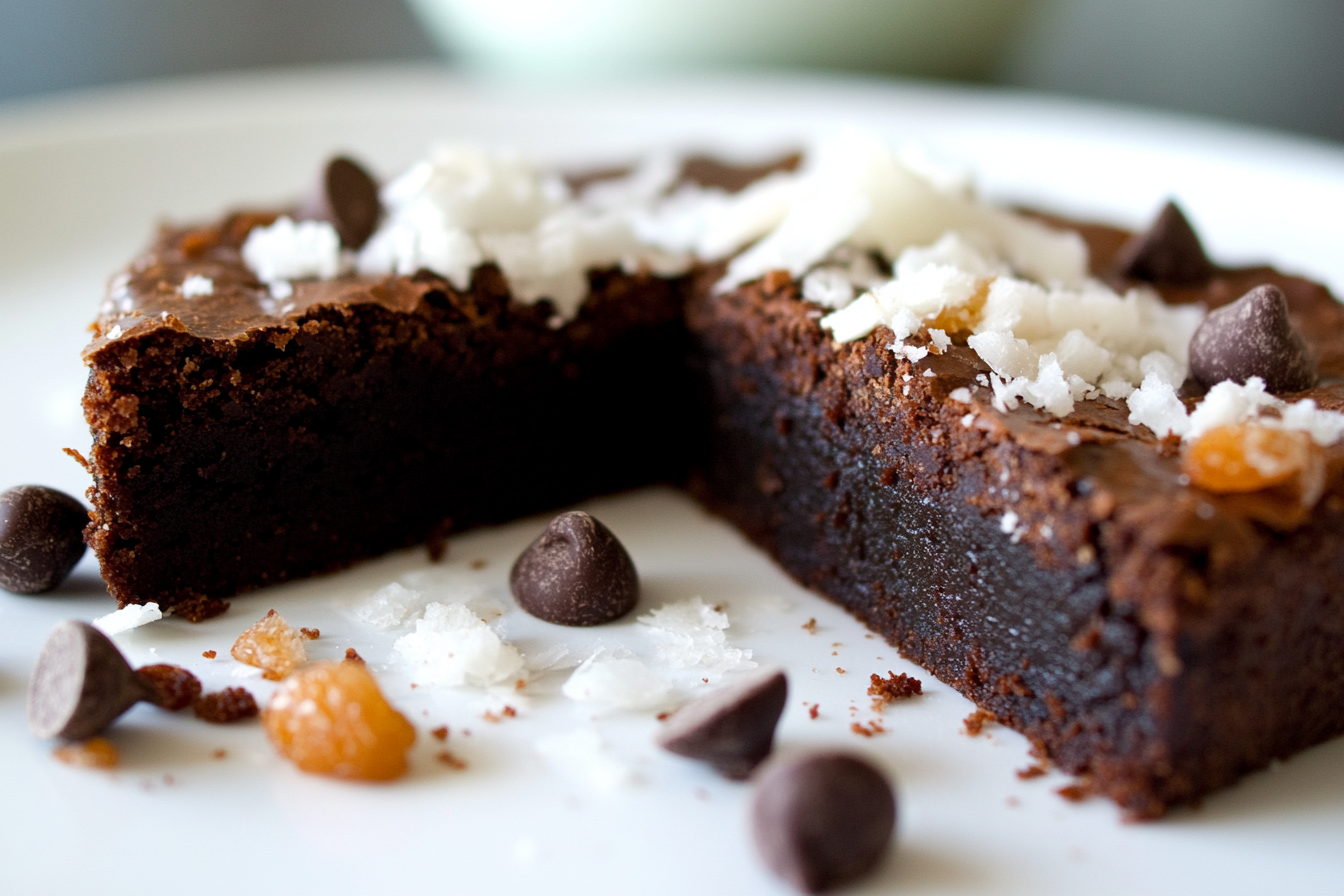Coconut oil is a versatile and nutrient-rich ingredient used in cooking, skincare, and wellness. Extracted from the meat of coconuts, it is known for its high saturated fat content and unique health benefits. In the kitchen, it serves as an excellent substitute for butter or vegetable oil, adding a subtle tropical flavor. Beyond cooking, coconut oil is a popular natural remedy for moisturizing skin and hair. Its antibacterial and antioxidant properties make it a staple in many households worldwide.

Why People Substitute Fats in Recipes
The decision to substitute fats in baking often stems from practical, health, or dietary reasons:
- Health-conscious choices: Many bakers seek alternatives to reduce saturated fat or add nutritional value.
- Dietary restrictions: Allergies or preferences like veganism often necessitate replacing dairy-based fats.
- Flavor experimentation: Swapping fats can open the door to unique taste profiles that elevate a recipe.
- Sustainability or cost concerns: Some opt for plant-based oils due to ethical or budgetary considerations.
Whether you’re looking to cater to a specific dietary need or simply curious about the results, coconut oil offers an excellent alternative to traditional baking fats.
Introduction to Coconut Oil
What Is Coconut Oil?
Coconut oil is a plant-based fat extracted from the meat of mature coconuts. Known for its versatility, it is commonly used in cooking, skincare, and beyond.
Types of Coconut Oil
Understanding the two main types of coconut oil can help you choose the right one for your baking needs:
- Refined coconut oil: Processed to remove its natural coconut flavor, making it ideal for recipes where you want a neutral taste.
- Unrefined (virgin) coconut oil: Extracted without heavy processing, retaining a subtle coconut aroma and flavor. Perfect for adding a tropical twist to baked goods.
Coconut Oil as a Baking Ingredient
Coconut oil has emerged as a powerful contender in the baking world for its range of benefits:
Nutritional Benefits
- Rich in medium-chain triglycerides (MCTs): A source of quick energy.
- Contains antioxidants that promote overall health.
- Offers a plant-based option for individuals following dairy-free or vegan diets.
Versatility in Baked Goods
Coconut oil’s adaptable nature allows it to seamlessly replace butter, shortening, or vegetable oil in recipes. Its solid-to-liquid properties make it ideal for creating fudgy brownies or flaky crusts.
Comparing Coconut Oil to Traditional Fats
Flavor Profile Differences
- Butter: Adds a creamy richness and slight saltiness.
- Vegetable oil: Neutral in taste, letting other flavors shine.
- Coconut oil: Offers a mildly sweet, nutty undertone that pairs beautifully with chocolate.
Melting and Texture Properties
Coconut oil behaves similarly to butter, solidifying at cooler temperatures and liquefying when warmed. This property makes it excellent for achieving the dense, fudgy texture that brownie lovers crave.

Health Considerations of Coconut Oil
While coconut oil is celebrated for its benefits, it’s essential to weigh the pros and cons:
Saturated Fat Content
Coconut oil is high in saturated fat, which can be a concern for those managing cholesterol. However, studies suggest that the MCTs in coconut oil may be metabolized differently, potentially offering unique benefits.
Dietary Benefits and Drawbacks
- Supports vegan and paleo lifestyles.
- Suitable for individuals avoiding allergens like dairy.
- Overuse may contribute to calorie overload, so moderation is key.
Why Choose Coconut Oil for Brownies?
Enhancing Flavor
Coconut oil amplifies the rich, chocolatey notes of brownies, creating a dessert that feels indulgent yet wholesome.
Suitable for Dairy-Free Recipes
For those avoiding butter, coconut oil provides a buttery texture and richness without compromising dietary needs. It’s an excellent substitute in recipes for vegan or lactose-intolerant individuals.
Coconut Oil and Dietary Preferences
Coconut oil aligns with a variety of modern dietary trends:
- Vegan and paleo-friendly: A natural fit for plant-based and grain-free diets.
- Allergen considerations: Coconut oil is free from common allergens like soy and dairy, making it suitable for sensitive diets.
These properties make it a go-to ingredient for bakers catering to diverse needs.
Storing Coconut Oil for Baking
Proper storage ensures the longevity and quality of your coconut oil:
- Room temperature: Store in a cool, dark place to prevent melting or spoilage.
- Refrigeration: For long-term storage, refrigerate coconut oil to maintain its freshness and prevent oxidation.
- Avoid contamination: Use clean utensils to avoid introducing moisture or bacteria into the container.
By following these tips, you’ll always have high-quality coconut oil ready for your next batch of brownies.
Popular Recipes Using Coconut Oil in Baking
While brownies are a standout, coconut oil shines in a variety of baked goods:
- Cookies: Achieve soft, chewy textures with a hint of nuttiness.
- Cakes: Enhance moisture while adding a subtle tropical flavor.
- Pie crusts: Create perfectly flaky crusts with a vegan twist.
Experimenting with coconut oil can revolutionize your baking repertoire.
Tips, Variations, and Advanced Uses for Coconut Oil Brownies
Coconut oil brownies are a unique twist on a classic dessert, offering a balance of rich flavor, health benefits, and versatility. Whether you’re baking for a specific dietary need or simply exploring new flavors, coconut oil provides an adaptable foundation for creating standout brownies. Let’s explore advanced tips and variations to elevate your coconut oil brownie game.
Customizing Coconut Oil Brownies
One of the greatest pleasures of baking is the freedom to customize recipes, and coconut oil brownies are an ideal canvas for creativity. With a few thoughtful tweaks and additions, you can elevate the flavor, texture, and visual appeal of your brownies to suit any occasion.
Add-Ins for Extra Flavor
Adding mix-ins is an easy way to enhance the flavor and texture of your brownies. Here are some popular options:
- Nuts: Incorporate chopped walnuts, pecans, or hazelnuts to add a satisfying crunch and nutty depth that complements the rich chocolate base.
- Fruits: Balance the sweetness of the chocolate by mixing in fresh raspberries, dried cherries, or even a swirl of fruit puree. The tanginess of the fruit creates a delightful contrast.
- Extracts: A few drops of almond, peppermint, or orange extract can infuse your brownies with unique flavor notes, giving them a sophisticated twist.
Toppings and Decorative Swirls
Toppings and swirls can make your brownies more visually appealing while adding layers of flavor:
- Swirls: For an eye-catching design and extra taste, swirl in peanut butter, caramel, or marshmallow fluff before baking. These additions create a marbled effect that’s as beautiful as it is delicious.
- Toppings: Sprinkle shredded coconut, chocolate chips, or a pinch of sea salt on top of your batter. These toppings enhance texture while adding visual interest.
Why Customization Matters
In conclusion, customizing coconut oil brownies allows you to tailor them to specific tastes or occasions. Whether you’re hosting a dinner party or simply treating yourself, these enhancements ensure your brownies are as delightful to eat as they are to look at.

Gluten-Free Coconut Oil Brownies
Coconut oil brownies are naturally suited for gluten-free baking. With the right flours and adjustments, you can create brownies that are both rich and moist.
Choosing Gluten-Free Flours
- Almond Flour: Keeps brownies moist and adds a subtle nutty flavor.
- Coconut Flour: Highly absorbent, so it requires extra liquid or eggs.
- All-Purpose Gluten-Free Blends: Mimic traditional flour for a seamless substitution.
Tips for Success
- Combine flours for better texture.
- Add an extra egg or binding agent like xanthan gum to ensure structure.
By incorporating these flours, you can create brownies that cater to everyone’s dietary needs.
Using Sugar Alternatives
Coconut oil brownies can be made healthier by swapping refined sugar for natural or low-calorie sweeteners.
Popular Substitutes
- Honey or Maple Syrup: Provide moisture and a mild sweetness.
- Coconut Sugar: Complements the coconut oil’s flavor with caramel-like notes.
- Stevia or Monk Fruit: Offer low-calorie options for a guilt-free dessert.
Adjustments for Sweeteners
- When using liquid sweeteners, reduce other liquids slightly.
- Granular sweeteners may require more thorough mixing to avoid grit.
These alternatives keep your brownies indulgent without compromising health goals.
Fudgy vs. Cake-Like Brownies
Coconut oil’s versatility allows you to adjust brownie recipes for either fudgy or cake-like textures.
For Fudgy Brownies
- Increase coconut oil for more richness.
- Reduce flour to keep the batter dense.
- Avoid leavening agents like baking powder.
For Cake-Like Brownies
- Add more eggs to introduce air and structure.
- Use slightly less coconut oil and more flour.
- Include a pinch of baking powder for lift.
These tweaks let you craft brownies tailored to any preference.
Vegan Coconut Oil Brownies
Coconut oil is a vegan-friendly ingredient that works seamlessly in plant-based baking. Pairing it with egg and dairy substitutes results in delicious vegan brownies.
Vegan Egg Substitutes
- Flaxseed Meal: Mix 1 tablespoon of flaxseed meal with 3 tablespoons of water per egg.
- Chia Seeds: Use the same ratio as flax for similar binding.
- Applesauce: Adds moisture and natural sweetness.
Dairy-Free Alternatives
- Replace milk with almond, soy, or oat milk.
- Use vegan chocolate chips or cocoa powder.
With these adjustments, you can create vegan brownies that are rich and satisfying.
Presentation Ideas
The way you present your brownies can dramatically transform them from everyday desserts into show-stopping treats. Thoughtful presentation not only enhances the aesthetic appeal but also adds a touch of sophistication to your culinary creations.
Serving Suggestions
To begin with, consider how your brownies are served:
- Brownie Sundaes: Serve warm brownies with a scoop of vanilla or coconut milk ice cream, drizzled with chocolate or caramel sauce for an indulgent dessert that’s perfect for guests.
- Layered Brownies: Elevate your brownies by adding a layer of frosting, ganache, or even a dusting of cocoa powder in between layers. This technique creates a visually appealing stack that looks as luxurious as it tastes.
- Shapes and Sizes: Use cookie cutters to create themed shapes such as hearts for Valentine’s Day or stars for festive occasions. These playful designs can make your brownies feel extra special.
Finishing Touches
Moreover, the right finishing touches can take your brownies to the next level:
- Dust with Powdered Sugar or Cocoa: For a simple, elegant finish, lightly dust your brownies with powdered sugar or cocoa powder. This technique is timeless and suitable for any occasion.
- Add Edible Glitter or Crushed Candies: To make your brownies more festive, sprinkle edible glitter or crushed candies on top. This works especially well for holiday-themed desserts or birthday celebrations.
- Drizzle with Melted Chocolate or Caramel: A thin drizzle of melted chocolate or caramel across the surface not only enhances the flavor but also gives your brownies a polished, professional look.
Why Presentation Matters
In conclusion, these thoughtful presentation ideas ensure your brownies are not just delicious but also visually stunning. Whether you’re preparing them for a casual family dinner or a formal event, well-presented brownies are sure to impress and delight.
Scaling Recipes with Coconut Oil
Whether baking for a crowd or a small gathering, coconut oil brownies are easy to scale.
Doubling the Recipe
- Double all ingredients, including coconut oil, for larger batches.
- Use a bigger pan and adjust baking time slightly.
Halving the Recipe
- Reduce all ingredients by half.
- Use a smaller pan and monitor baking time closely, as smaller batches bake faster.
Scaling ensures you have just the right amount for any occasion.
Exploring Other Oils
While coconut oil shines in brownies, other oils can offer different flavors and benefits.
Oil Comparisons
- Olive Oil: Adds a fruity, robust flavor but may overpower delicate recipes.
- Avocado Oil: Neutral and nutrient-rich, a good alternative for health-focused baking.
- Canola Oil: Flavorless and versatile, suitable for budget-friendly recipes.
Though these oils have their place, coconut oil stands out for its versatility and distinct flavor.
FAQs About Coconut Oil Brownies
- Can I use coconut oil in any brownie recipe?
Yes, substitute butter or oil with an equal amount of melted coconut oil. - What’s the difference between refined and unrefined coconut oil?
Refined oil is flavor-neutral, while unrefined retains a mild coconut taste. - Can I freeze coconut oil brownies?
Yes, wrap tightly and freeze for up to three months. - Do coconut oil brownies taste like coconut?
Only if you use unrefined coconut oil. - Are coconut oil brownies healthier?
They can be when paired with natural sweeteners or gluten-free flours. - How should I store them?
Store in an airtight container at room temperature for up to three days or refrigerate for a week. - Can I make vegan brownies with coconut oil?
Yes, it pairs well with plant-based substitutes. - Does coconut oil affect baking time?
Slightly; check for doneness a few minutes earlier. - Can I use it in store-bought mixes?
Absolutely, replace the oil with melted coconut oil for better flavor. - What happens if coconut oil solidifies in batter?
Warm the batter slightly to re-melt the oil.
Related Article : date fudge brownie chocolate chip coconut oil

